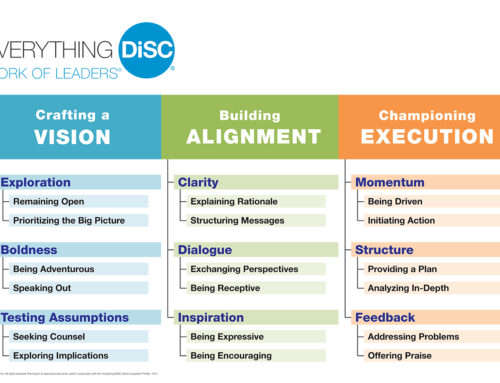Bored?
Looking for a little excitement? Try googling, “Compliment Sandwich.’ You’ll find a few posts that define it and a bunch of articles on why you should NEVER use one.
So, what is a compliment sandwich?
It’s placing critical feedback between two positive statements about a person’s performance to lessen the pain or discomfort of the recipient.
Or, as the Urban Dictionary defines it:
“When someone tries to ease the blow of a criticism by delivering it between two insincere compliments.”
When the compliment sandwich was originally conceived, the intent was to say something positive along with the correction so as not to be just the bearer of continuous negative feedback. It was a combination of your critical mother-in-law— who didn’t have anything good to say about you— with your mother, who always said, “If you can’t say something good, don’t say anything at all.
Sandwich Haters say it’s manipulative, insincere, treats people like they are stupid, and feels fake. Those are the kinder descriptions. Some folks get downright apoplectic about the use of the C-Sandwich and with good reason. When you’re only using it as a technique, it becomes just that, a technique to manipulate the other person into doing what you want. Eventually your workforce dreads hearing anything positive coming out of your mouth because they know it will predictably be followed by criticism.
So is this over-served morsel of feedback really all that bad?
Let’s begin by asking why it came to be in the first place.
Once upon a time
Some manager wanted to tell a direct report they needed some improvement in a specific area. This particular employee had a tendency to crumble at the slightest hint of negative feedback. The manager had an epiphany: “Tell them something nice— something they are doing right— so you can get them in a positive frame of mind, and follow that by pointing out what they’re doing wrong. This way they won’t get all weepy and sad.” Even that didn’t work very well, so the next time the manager had to ask that same employee to make a change in behavior, the manager started with the compliment—what the worker was doing right, followed by the, “but you’re really making a mess of…” statement. Then just to be safe, the brilliant manager threw in one more nice thing at the end. And there you have it. The tasty compliment sandwich was born.
Is it fake and manipulative? It can be.
Is it insincere? It can be.
However, when the principles of the sandwich are used with honesty and discretion, elements of the C-sandwich can be very effective. Part of the job of supervisors, managers, and leaders is to provide feedback. When something isn’t working, when behaviors are moving away from effectiveness, the role of a leader at any level is to honestly say, “What you’re doing is not working, not helpful, not appropriate, or not right.” So the meat of the sandwich is necessary.
It is also true that human beings thrive on appreciation, which is one of the most effective motivators in the workplace. Research indicates 66% to 79% of folks who walk away from their jobs and quit did so because they didn’t feel appreciated. And when a good employee leaves their position, it’s going to cost a lot to replace them.
The compliment sandwich is an attempt to balance negative feedback with positive encouragement. What makes it hard to stomach is when it’s used like a formula. Without sincere gratitude it can become habitual and rote. As much as your workforce thrives on appreciation, they can also distinguish the difference between heartfelt appreciation and manipulation that’s delivered with sugar coating. Therein lies the issue. The C-sandwich can quickly spoil when it becomes routine and predictable. It’s this misuse of the compliment sandwich that makes it so distasteful to some.
Solution: Live in the Sandwich
The solution to this problem is to look for opportunities to sincerely express appreciation often. Later, when you must correct an employee’s behavior, you’ve already made enough deposits into the, “They really appreciate me” account you won’t withdraw so much capital that you end up with insufficient funds. Just don’t turn it into a “compliment quota system. “
Provide enough appreciation that you have a surplus of goodwill which will make negative feedback much more effective.
Research in the psychology of learning indicates that intermittent rewards are most effective. This means sometimes you get a cookie for doing a good job, and sometimes you don’t.
This principle is also true for intermittent praise which precedes corrective feedback. It’s more effective if sometimes we simply provide the feedback, and other times we sandwich that feedback with praise.
The Emotionally Literate Leader understands that there is no one-size-fits-all formula for providing feedback and correction. Each person requires an individual approach. He or she understands that praise must be genuine in order to be effective, and depending on their personality style, some folks need more praise than others. But for everyone, praise must always be authentic and from the heart.
TO DO:
Monitor your own ratio of corrections to compliments. Keep a journal of every time you provide negative feedback and every time you express appreciation. Understand that different personality styles require different approaches. Some people just want you to tell them what needs to be corrected and get on with the show. Others truly do live for continuous praise. Know your people and speak their language. But do it from the heart, and not from a checklist, and you’ll find that whether you serve a sandwich or just provide a loaf of bread with a hunk of meat, your feedback will be a lot more effective.
Tim Hast is provides coaching, training, and consulting at Encore Life Skills LLC. please share your best or worst compliment sandwich story with him tim@encorelifeskills.com







Leave A Comment